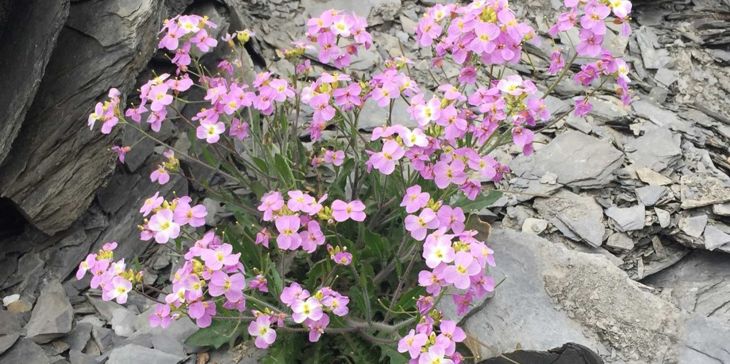Most mammals and humans have a double set of chromosomes – and as a rule, plants do, too: one set comes from the father, the other from the mother. Such organisms are called diploids. However, sometimes the number of chromosome sets doubles from one generation to the next: one diploid organism suddenly becomes a tetraploid – i.e. it has four sets of chromosomes.
Unlike in humans, where multiple genomes are usually fatal, polyploidy can have advantages for the plants affected. Plants with multiple genomes adapt better to the environment and are salt-tolerant or drought-resistant. In addition, they often produce larger seeds or fruits and result in greater yields – promising characteristics for crops of the future.
But there’s just one thing: newly formed polyploid individuals of a plant species are usually completely or almost completely sterile and cannot be propagated easily. The reason why these plants are infertile is not yet fully understood.
Genes that control the pollen tube
Kirsten Bomblies, ETH Professor of Molecular Plant Evolutionary Genetics, and her team have now discovered a previously unrecognised mechanism for reduced fertility in polyploids. In a recent study, published in external pageSciencecall_made, the researchers show that the pollen tube does not grow properly in newly formed polyploid plants.
Normally, a pollen grain that sticks to the stigma of a flower during pollination germinates into a long tube that grows straight and unbranched through the ovary to the ovules, where fertilisation takes place.
The ETH researchers have observed that in newly formed polyploid plants, the pollen tube does not grow straight, nor is it sufficiently long. “In our experiments, we observed all kinds of shapes,” Bomblies says. “These pollen tubes could be crooked, branched, short, even burst – but none of them reached their destination.” This means that the male gametes, which are located at the tip of the pollen tube, cannot fuse with the plant’s egg cells.
Bomblies and her colleagues investigated this phenomenon in sand rock-cress (Arabidopsis arenosa). Two types of this wildflower occur in nature: one with a double set (like us) and one with a quadruple set of chromosomes. Tetraploid rock-cresses have managed to overcome the disadvantage of genome duplication and can establish themselves in independent populations.
In earlier studies of such tetraploid sand rock-cress populations, the researchers identified genes associated with the plant’s fertility for which novel variants had evolved in the tetraploids. Now, in this study, they worked back from these genes to figure out which traits they produce. This is in contrast to the more common approach in evolutionary genetics, where researchers start with a trait (phenotype) and attempt to identify the genes that cause it.
The reverse genetic search showed the ETH researchers that the two genes control the growth of the pollen tube. What’s more, in established tetraploid populations of sand rock-cress, the genes in question are often slightly different to the versions found in diploid individuals. “In other words, evolution has found a way to minimally vary the two genes in such a way that tetraploid individuals are fertile,” Bomblies says.
Benefits for plant breeding still unclear
Scientists have not yet unlocked all the secrets regarding the infertility of newly formed polyploids. “We’re currently investigating other gene candidates that are also involved in pollen tube growth,” Bomblies says.
Whether the new findings can be applied to plant breeding has yet to be investigated. However, the two genes are “highly conserved”. This means that they have been preserved throughout an organism’s evolutionary history and can be found in different species.
Bomblies thus believes it would be possible to transfer the two sand rock-cress genes to other species. She is currently working on this with her group: the researchers are testing whether they can transfer the two genes into the thale cress (Arabidopsis thaliana), a close relative of the sand rock-cress. “If we succeed in transferring the gene construct to another species, it could open up some interesting possibilities for breeding new crops,” she says.














